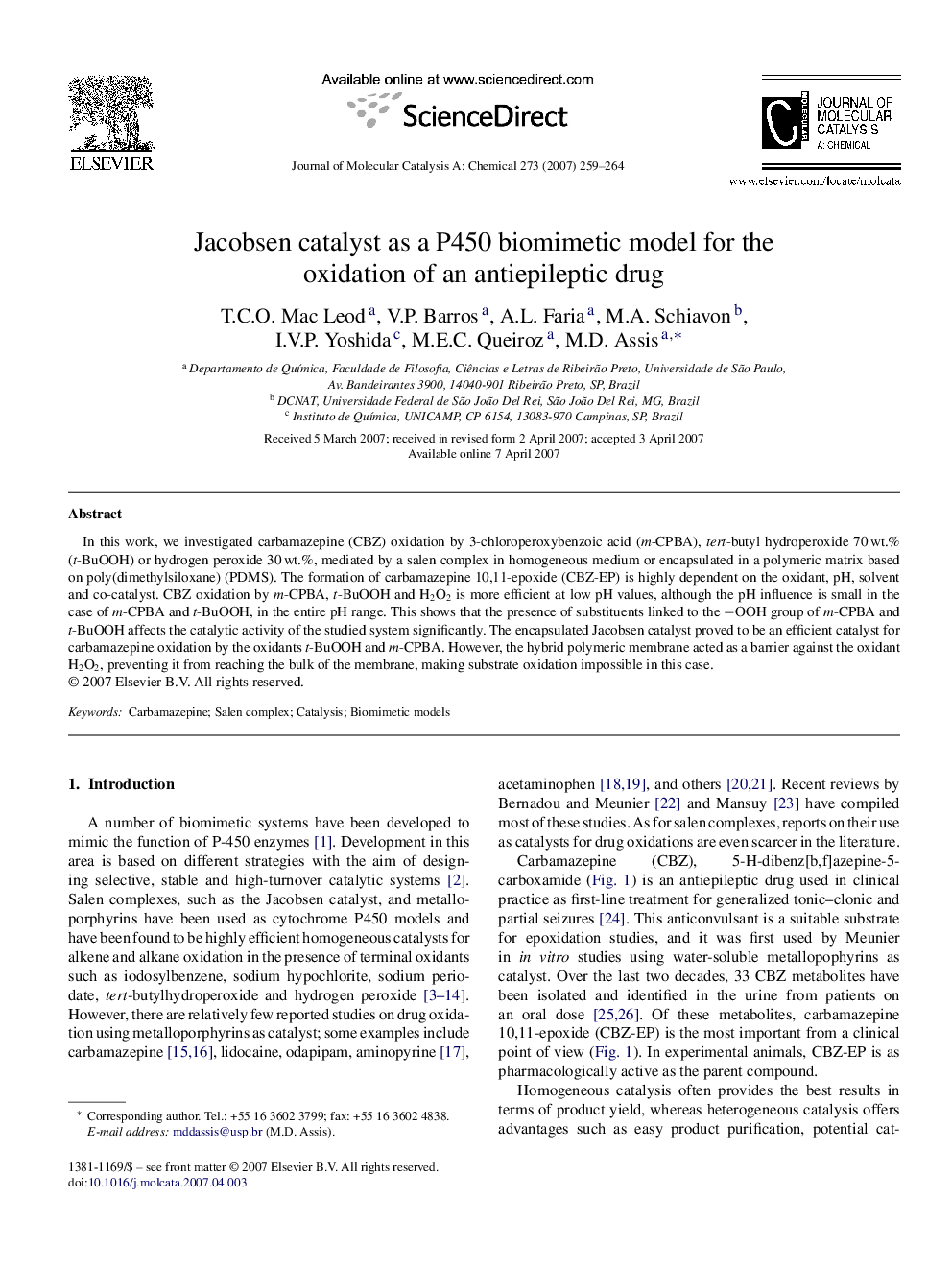| Article ID | Journal | Published Year | Pages | File Type |
|---|---|---|---|---|
| 67900 | Journal of Molecular Catalysis A: Chemical | 2007 | 6 Pages |
In this work, we investigated carbamazepine (CBZ) oxidation by 3-chloroperoxybenzoic acid (m-CPBA), tert-butyl hydroperoxide 70 wt.% (t-BuOOH) or hydrogen peroxide 30 wt.%, mediated by a salen complex in homogeneous medium or encapsulated in a polymeric matrix based on poly(dimethylsiloxane) (PDMS). The formation of carbamazepine 10,11-epoxide (CBZ-EP) is highly dependent on the oxidant, pH, solvent and co-catalyst. CBZ oxidation by m-CPBA, t-BuOOH and H2O2 is more efficient at low pH values, although the pH influence is small in the case of m-CPBA and t-BuOOH, in the entire pH range. This shows that the presence of substituents linked to the −OOH group of m-CPBA and t-BuOOH affects the catalytic activity of the studied system significantly. The encapsulated Jacobsen catalyst proved to be an efficient catalyst for carbamazepine oxidation by the oxidants t-BuOOH and m-CPBA. However, the hybrid polymeric membrane acted as a barrier against the oxidant H2O2, preventing it from reaching the bulk of the membrane, making substrate oxidation impossible in this case.
Graphical abstractThe carbamazepine oxidation by 3-chloroperoxybenzoic acid (m-CPBA), tert-butyl hydroperoxide (t-BuOOH) or H2O2, mediated by a salen complex was investigated in homogeneous medium or encapsulated in a matrix based on poly(dimethylsiloxane). The product carbamazepine 10,11-epoxide is dependent on the oxidant, pH, solvent and co-catalyst. The encapsulated complex was an efficient catalyst for carbamazepine oxidation using t-BuOOH and m-CPBA as oxidant. Figure optionsDownload full-size imageDownload as PowerPoint slide
